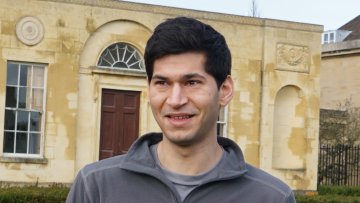12:00
Conformal Geometry of Null Infinity, including gravitational waves
Abstract
Since the seminal work of Penrose, it has been understood that conformal compactifications (or "asymptotic simplicity") is the geometrical framework underlying Bondi-Sachs' description of asymptotically flat space-times as an asymptotic expansion. From this point of view the asymptotic boundary, a.k.a "null-infinity", naturally is a conformal null (i.e degenerate) manifold. In particular, "Weyl rescaling" of null-infinity should be understood as gauge transformations. As far as gravitational waves are concerned, it has been well advertised by Ashtekar that if one works with a fixed representative for the conformal metric, gravitational radiations can be neatly parametrized as a choice of "equivalence class of metric-compatible connections". This nice intrinsic description however amounts to working in a fixed gauge and, what is more, the presence of equivalence class tend to make this point of view tedious to work with.
I will review these well-known facts and show how modern methods in conformal geometry (namely tractor calculus) can be adapted to the degenerate conformal geometry of null-infinity to encode the presence of gravitational waves in a completely geometrical (gauge invariant) way: Ashtekar's (equivalence class of) connections are proved to be in 1-1 correspondence with choices of (genuine) tractor connection, gravitational radiation is invariantly described by the tractor curvature and the degeneracy of gravity vacua correspond to the degeneracy of flat tractor connections. The whole construction is fully geometrical and manifestly conformally invariant.





